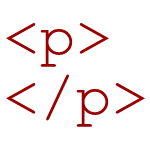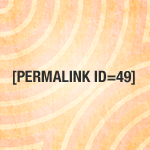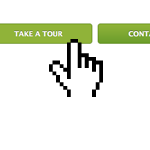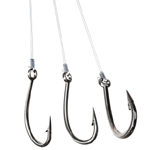WordPress dashboard widget for PHP errors log
Steve Taylor takes PHP error-logging to the next level by making it easy for WordPress users to display the latest errors as a widget on the WordPress dashboard. Just drop the script into your functions.php file, configure a few variables, and enjoy tracking of your site’s PHP errors from your WP dashboard. Works great as-is, and looks like a great starting point for further development into plugin format. Update 2024/05/01: This linked article has been taken offline.

Five Ways to Change Your WordPress Password
With the dynamic nature of WordPress, creating, using, and maintaining strong passwords is critical. Passwords help keep the good guys in and the bad guys out, enabling you to run a safe, secure WordPress-powered website. In this DiW tutorial, we’re going to show you how to change your WordPress password in virtually any scenario: logged in, locked out, and everything in between.

Clean Up Empty Elements with CSS 3
By default, WordPress wraps HTML comments with paragraph tags:
<p><!-- --></p>WordPress also employs various template tags that may, in certain situations, result in empty HTML elements such as paragraphs tags:

Easy Shortcode Permalinks
When you are building a theme, and the circumstance comes up where you need to create a link to a specific page hard-baked right into the theme, there is a function you should be using.

Integrating Fading Button Navigation
I was talking with Darren Hoyt recently about building a better interactive button1. The goal of the button was to provide three states: regular, hover, and active (pressed). That is standard of any good button, but we were going to integrate some fading effects into it to really making the button satisfying to interact with. Here is a demo, and in this tutorial we’ll show you how to integrate it into WordPress.

Precision Targeting with Custom Action Hooks
WordPress’ powerful action-hook system makes it possible to insert functionality at any point in your theme. Most WordPress themes include some of the built-in WordPress hooks by default. For example, most of us are aware of the two most common WordPress hooks: wp_head() and wp_footer(), which generally appear in the theme’s header and footer sections. These two hooks provide WordPress a location at which to execute various scripts and functions. For example, the wp_head() hook is where WordPress generates a variety of <link /> and <script></script> elements, among other things.
Members: WordPress Plugin
Justin Tadlock takes WordPress user-management to the next level with his new “Members” Plugin. Members improves WordPress’ content-management capabilities by providing some serious “fine-grain” control over the users of your site. The plugin features many functional “components,” which may be selected according to your specific needs. From editing roles and content permissions to widgets, shortcodes, and template tags, Justin’s new Members plugin looks like the ideal solution for your user-management needs.

Global Custom Fields, Take Two
Just as I hoped, someone wrote in with a far nicer solution to my Global Custom Fields solution than I originally had. Big thanks to David Hollander for this.
How To: Breadcrumbs in WordPress
I’ve always used plugins for breadcrumbs, but of course rolling your own is always appealing. Gilbert Pellegrom shows us how to do it with our own custom functions.
Editor’s note: 404 link removed.
Create an RSS Feed from Nested Child Pages
Over on CSS-Tricks, I describe a problem I had of trying to create an RSS feed of pages that were buried two deep under a parent page. The standard query_posts can’t go two levels deep with pages, or accept multiple parent pages to run the query. Instead I had to create multiple feeds from a custom template and stitch them together.

Global Custom Fields
Custom fields allow us to attach data to Posts or Pages that we can yank out and use at will in our templates. They are awesomely flexible and single-handedly allow WordPress to be used for about any CMS need. The fact that they can only be used on single Posts can be limiting in some circumstances. Sometimes you wish you could grab a custom value that you can control and is consistent globally, regardless of the current post. In this post we’ll look at a technique to do so.

Easy Custom Feeds in WordPress
Now that we have seen how to setup Tumblr-style posts, it would be nice to be able to segregate the Tumblr-posts category from the main feed into its own, separate feed. This would enable readers to subscribe exclusively to the Tumblr-posts feed and maybe display it in their sidebar or something.
Including WordPress’ comment-reply.js (the right way)
Web developer and WordPress enthusiast Peter Wilson explains an improved method for including WordPress’ comment-reply.js. His method “checks if the visitor is browsing either a page or a post, if comments are open for the entry, and finally, if threaded comments are enabled. If all of these conditions are met, the JavaScript required for threaded comments is added.”
Serve IE6 Visitors the Default WordPress Theme
Nathan Rice shares an clever technique to serve your IE6 visitors the Default WordPress theme (or any theme, for that matter). He even wraps it all up into a nice plugin that you can use for your site. I think this is a good middle-ground between completely ignoring IE6 and breaking your back trying to accommodate it. You could even design an “all-purpose” theme for IE6 to streamline new site development. Drag, drop and done. (404 link removed)







